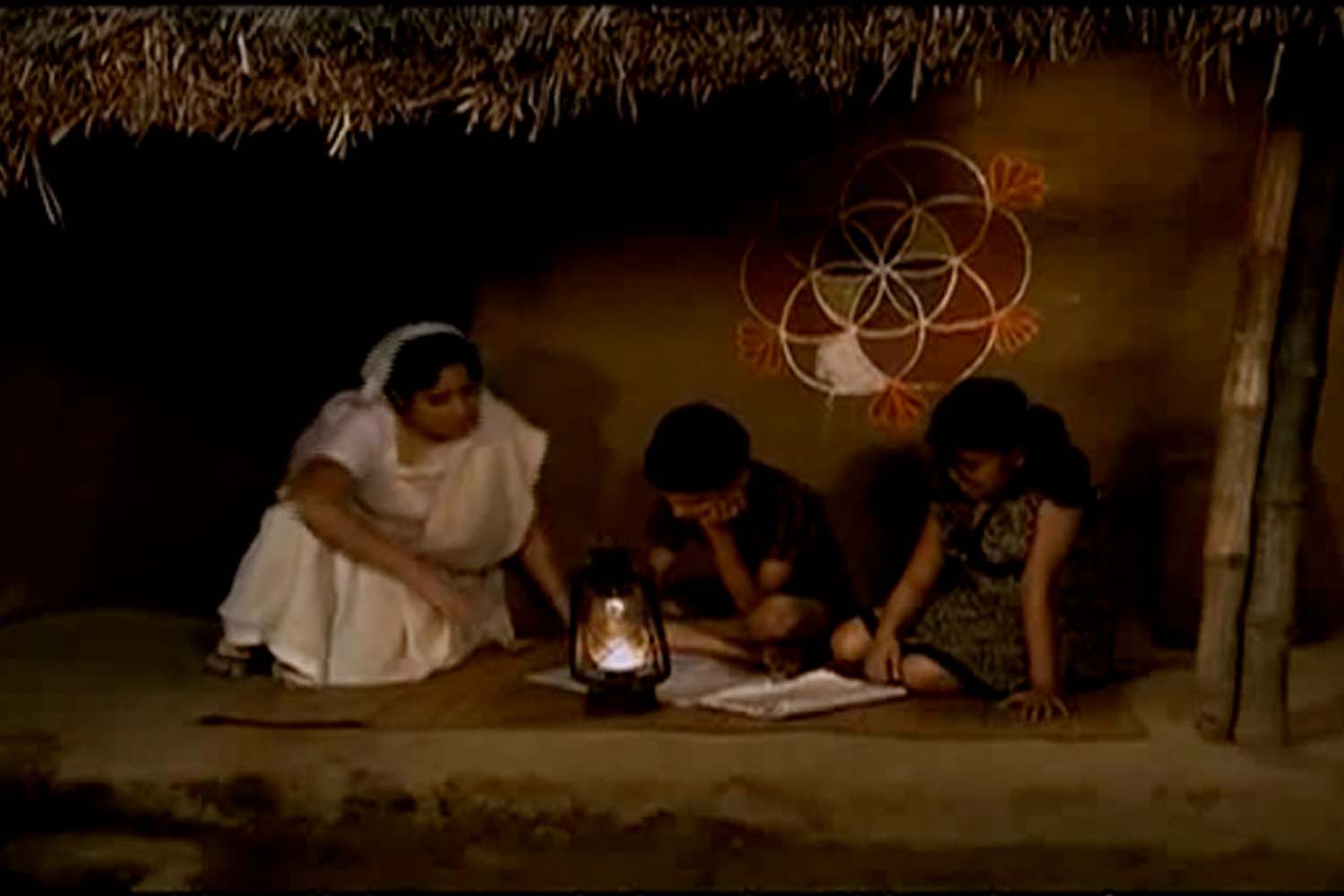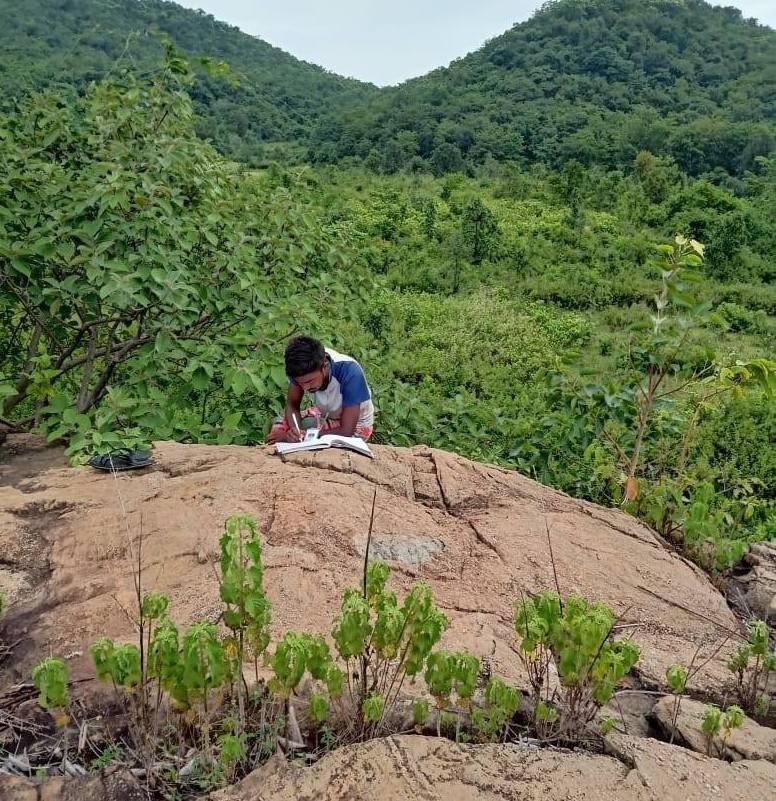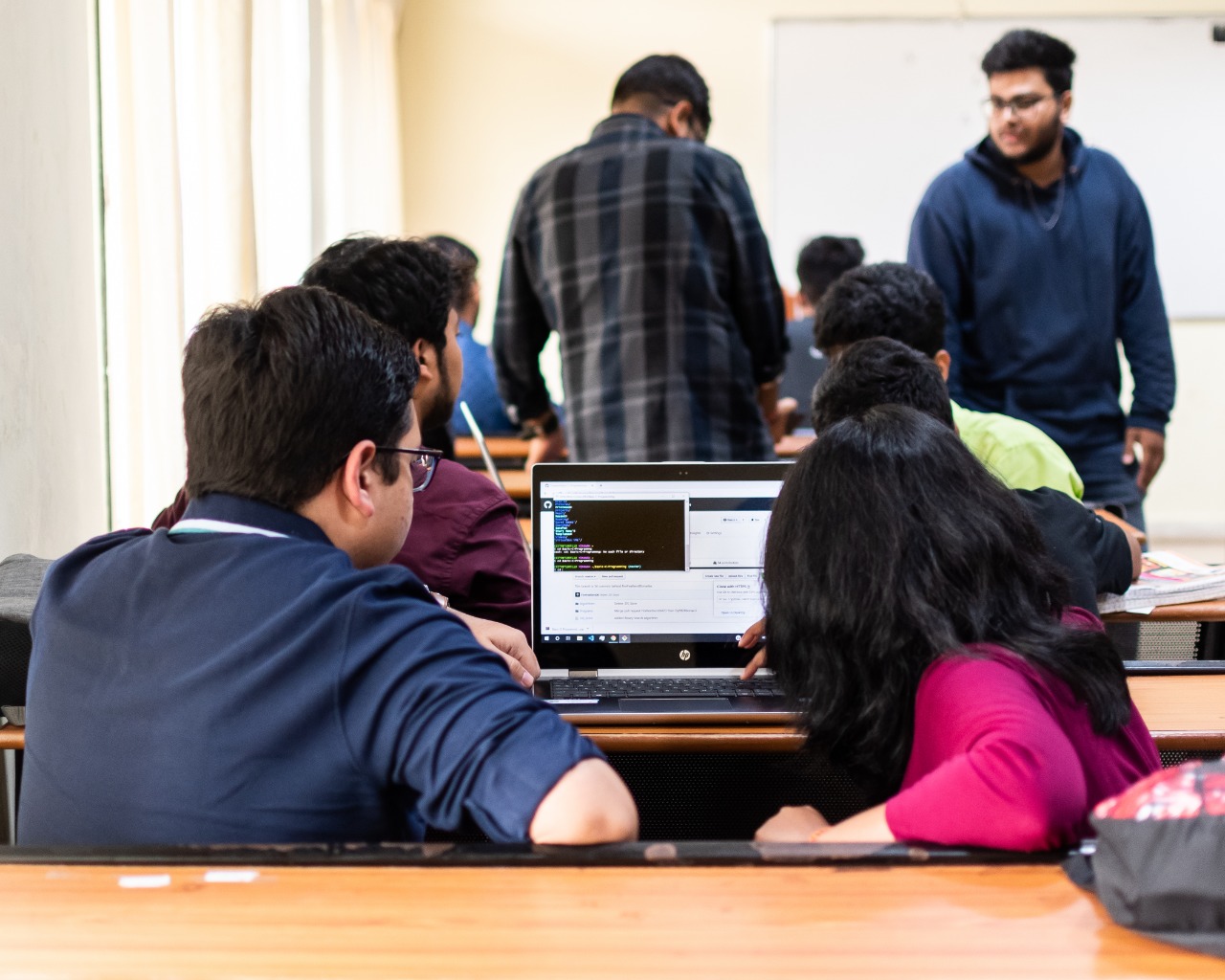Engulfed by the third wave of pandemic, I can not help but think of my childhood days, when my younger sister, Iti and I would keep our studies limited to early evening as we could not afford kerosene for lanterns. Maa would ask us to sleep by seven to avoid hunger pangs and darkness. Similar is the plight of the disadvantaged students of today who are left out from the process of digital education because the families cannot afford it. History repeats, and repeats to my agony.
Just before a few days, the threat of the wave was looming large, and now the wave has hit us. Omicron, a variant of Covid 19 has started affecting us in large numbers. Almost 1.5 lakh people are being reported as infected. Even in Odisha, which has a population of over 45 million people, more than 4000 cases are being reported. In the unlock, restrictions have again come into being. As the third wave of the pandemic approaches, the inevitable lockdowns will wreak havoc on the economy and livelihoods. More than 230 million Indians had been pushed in poverty last year and this year 2022 too seems really gloomy. In all such situations, poor people are most vulnerable.
Across major occupations, casual labourers, migrant workers & non-regulated workers will bear the highest impact of the pandemic. It usually happens in a crisis that low-income state like ours bear the highest incidence of poverty.
Even though there is a lot of suffering out there, I feel that the children of poor people are the ones who are deeply getting hit because of the pandemic. Students face an increasingly uncertain environment, and expectations about future takes a toll on them, both physically and mentally. Children who have taken admission in schools and colleges are missing out on classroom teaching which according to me is one of the most effective ways of learning.
Personally, I have been advocating every possible measure to make these children study; be it the doorstep delivery of books and foods or online classes via virtual medium. But there is, unfortunately, no substitute to classroom teaching and the situation is beyond control. Also, the lower middle class and the poor children in rural areas are forced to study through mobile phones as laptops and desktops aren’t easily affordable. Having a smartphone in itself is tough but paying internet bills monthly is tougher. The financial and socio-ecomic constraints forces students to withdraw from classes, delay in graduation, decrease in study hours and academic performance. It often lead to mental breakdowns amongst students.
After the decrease in cases during second wave students of KISS from 9-12th grade were called back to the institution where classes were conducted offline. But the unforeseen rise of cases has forced the administration to send the children back home where they can stay indoors. When the announcement was made, few KISS students didn’t want to return home as they couldn’t afford two whole meals a day back home nor could they pay for phones or internet connectivity. This is the impact that COVID has had on the education system, financially backward class and even on such a huge residential institution like KISS.
Personally, these experiences take me back to a time when I couldn’t afford to buy kerosene to light the lamps back at home during the evening to study. Our village didn’t have a steady supply of electricity and it was only under lanterns that one could study at home, and our family could not afford even burning oil for lantern. I can now realise that even though times have changed, the situation of poor people still remains the same. Then it was the lack of kerosene and now it is the lack of gadgets.
But situations can change and things can improve. Education is needed to eradicate poverty. It is the most effective weapon to slay poverty. Government has to make sure that digital connectivity across the country is available to meet such unforseen situations in the age of digital media and prioritise bridging the digital divide.





Even though the time changes then to now but the plight of poor remind same sir and you have experienced it for which you have done a miracle in education sector . Let’s share their problems unitedly to give a better world.
Beautifully narrated Sir… Most inspirational story to young mass
Yes poverty is a major factor that prevents the growth of universal education. How many people can struggle with this poverty, social insecurities and establish themselves like Dr.Achyut Samant? There is a need for awareness to join hand in hand to eradicate this trauma.
The author’s Philosophy is Eradication of Poverty through Education & with this Philosophy & his childhood background he founded KISS for the education of Poorest of the Poor.
The Author is more worried & concerned specially for this ongoing pandemic as Offline education came to an end & online education was only option & was beyond reach of many Students because of their remote localities, affordability for Smart phone, Net connectivity Problems etc.
The author recollected the information from his very childhood how social background can affect the education which he himself had experienced.
The author’s message is that unequal opportunities in education are the problem for families and students to adress.
He states how students are affected by family background specially due to ongoing Corona Pandemic because of requirements of Smart Phones & net Connectivity.
Even Smart Phones are available, net Connectivity is a problem because of Remote localities.
Pandemic exposed the Situation!
There is Digital Divide!
This approach regards society as an unequal entity.
Inequalities of different levels lead to conflicts and trigger changes in social structure.
I consider social background and economic status in terms of unequal opportunities.
Diversity in opportunities does not result in order and stability, quite on the contrary: we may regard inequality in Education, struggle to persevere their privilege and supremacy.
The appropriate solutions to the problem of inequality would be almost entirely school-focused.
Someone said long back
India is Poor because it is Poor.
Even after more than 50 Years’ time the author feels that the situation remains same for the Poor.
Now, it is up to the Govt to provide Net facilities at each & every place of the localities when we are talking of Digital transaction for everything.
Thanks a lot for being a inspired person for us. You are the real hero of this society.
Pandemic has been a boon ,as it gave boost to digitalization and distance learning.
The children deprived of education got a good scope to access their study anywhere they prefered to.
We , see each write ups and it’s encouraging for all individuals amongst us.
As it’s been mostly mentioned every now and then till today ,education is the third eye. Additively ,distance learning of kids finally became a desideratum after the pandemic third wave .
Wow…… excellent read. Mind bending
Hon’ble Sir, I would appreciate the way you penned down the naked truth and started advocating for poorest among the poors of the clumsy society; especially upon educatio. In simple words, poverty will never be a constraint against education, when we will be able to see KISS all around.
O/o DyCoE & O/o Dean
School of Civil Engineering
KIIT University, Bhubaneswar
Beautifully narrated with a great concept and conveys a good message at the end. I keep on reading most of your blogs 🙏🏻
The pain felt and the pain flows down in the form of experienced words of powerful feelings ..it’s heart touching. .but hope is the only way to stay healthy …as till the time we live we can strive ..Prof Achyuta Samanta you have made us to learn from you to stay grounded how much power ..money and fame might have touched us…hats off you Sir ji
Great
Large number of students have been facing hardships to afford a smart phone or cheap tablet. Many schools in rural area are not able to provide online classes. Those students whose parents are unknown how to use technology and access website have been away from studies for last 2-3 years. Internet in every corner of state is not available is another challenge.
Yes sir. It’s true for those poor students and you have got that experience in your childhood that you penned down here. Also doing your best for those through free education at KISS. May God give you all strength and support to the best for them
India USA country of villages,as observed by Mahatma Gandhi. Our founder of kiss and kiit having seen and experienced the “ Real poverty in his childhood when sir’s Papa died accidently” and even by his sheer determination and courage he could study and did his Doctoral studies in chemistry. So he believes that by providing “ good qualitative education “ one shines in this world of SHEER SOCIAL Darwinism. But Nature is unkind and unsympathetic on all poor students and poor people by not allowing them to work; to associate; to read in” institute of excellence like kiss” and. Forcing them back to their homes because of pandemic, so they donot have food properly in ther home and loose opportunity to learn Founder sir concern and kindness should be guiding lesson for all of us p
It’s the raw truth… Bridging the digital divide is the real need of the time.
The suggestions made by hon’ble Founder Sir is very remarkable and nice that the Government at Centre and State should work together to overcome digital divide . I salute him.
The steps should be taken to provide efficient net connectivity to the rural areas and even to the remote corners of the country. Further vocational and technical training and skills along with the tradition and modern education should be provided to young mass online and offline ,( the way KISS is performing). The attitude and value based system in the young generations should be inculcated in such a way that they become ” atma nirbhar” to establish their own entrepreneurship in the village and provide employment opportunities in rural area .
There is a need for reverse migration from urban areas to the rural areas for which the govts should provide subsidized opportunities for the start up Industries in rural area and develop the village economy. The efforts taken in these directions should be enhanced manifold so the development becomes multifold.
This way we can eradicate poverty , illiteracy and hunger in due course time
You are always there to support the poor.
Great
Agyan sir namaskar🙏🏻🙏🏻🙏🏻,
Your vision for eradication of poverty through education is extraordinary and incredible… For the above mentioned initiative and other noble activities of yours i am a big fan of yours…